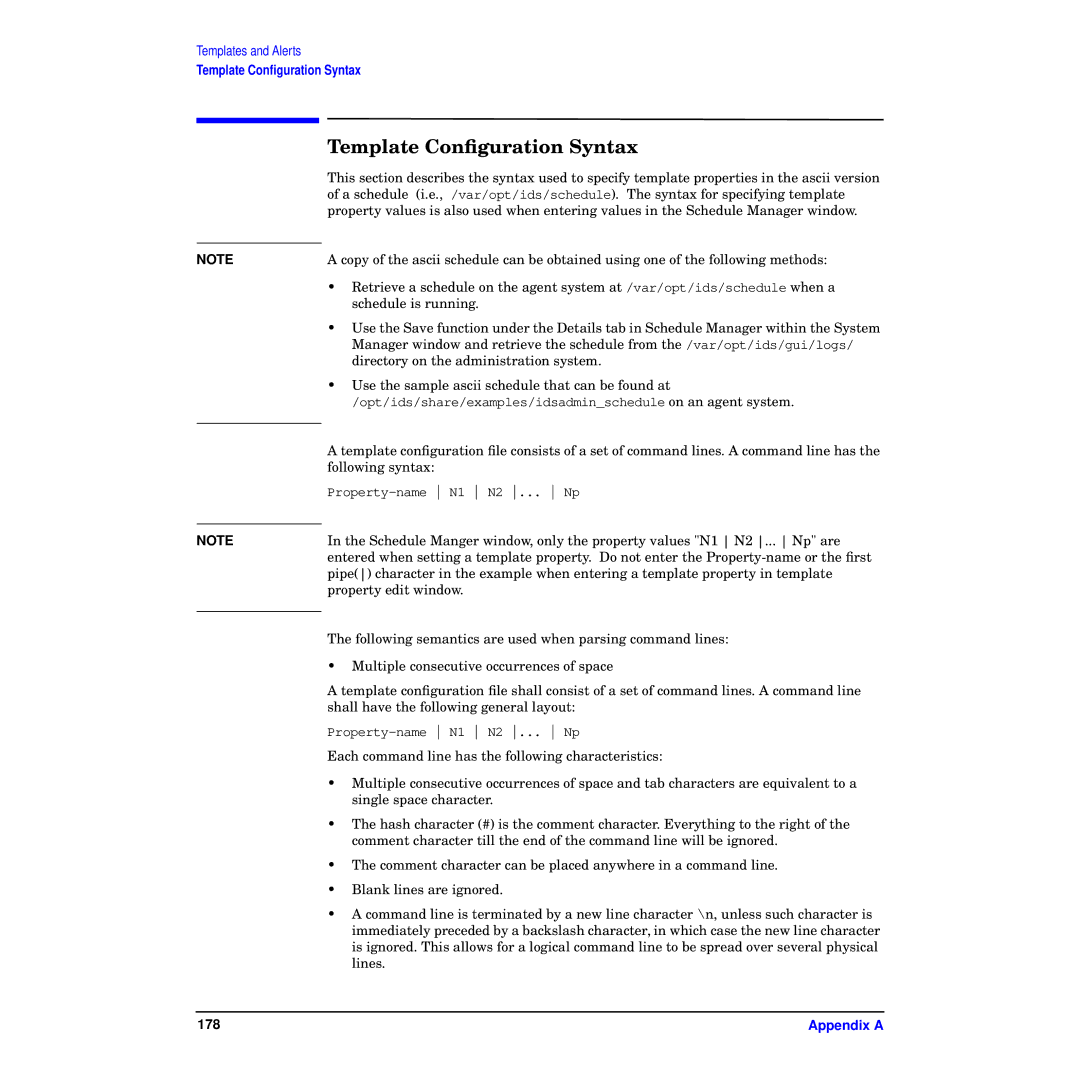
Templates and Alerts
Template Configuration Syntax
NOTE
NOTE
Template Configuration Syntax
This section describes the syntax used to specify template properties in the ascii version of a schedule (i.e., /var/opt/ids/schedule). The syntax for specifying template property values is also used when entering values in the Schedule Manager window.
A copy of the ascii schedule can be obtained using one of the following methods:
•Retrieve a schedule on the agent system at /var/opt/ids/schedule when a schedule is running.
•Use the Save function under the Details tab in Schedule Manager within the System Manager window and retrieve the schedule from the /var/opt/ids/gui/logs/ directory on the administration system.
•Use the sample ascii schedule that can be found at
/opt/ids/share/examples/idsadmin_schedule on an agent system.
A template configuration file consists of a set of command lines. A command line has the following syntax:
In the Schedule Manger window, only the property values "N1 N2 ... Np" are entered when setting a template property. Do not enter the
The following semantics are used when parsing command lines:
•Multiple consecutive occurrences of space
A template configuration file shall consist of a set of command lines. A command line shall have the following general layout:
Each command line has the following characteristics:
•Multiple consecutive occurrences of space and tab characters are equivalent to a single space character.
•The hash character (#) is the comment character. Everything to the right of the comment character till the end of the command line will be ignored.
•The comment character can be placed anywhere in a command line.
•Blank lines are ignored.
•A command line is terminated by a new line character \n, unless such character is immediately preceded by a backslash character‚ in which case the new line character is ignored. This allows for a logical command line to be spread over several physical lines.
178 | Appendix A |
